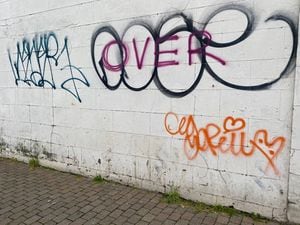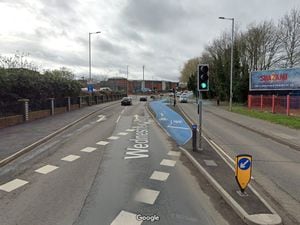Moves to combat rise in offensive graffiti in Wolverhampton - including on iconic Beatties building
A rise in incidents of offensive graffiti across Wolverhampton is set to be clamped down on by the city’s environmental bosses.

Between January and October this year, the council received 303 requests to remove graffiti from various locations in the city which resulted in 244 clean-ups.
Most recently, the environmental team has been removing graffiti from the former Beatties store building, which is awaiting redevelopment into apartments. Council bosses are also working towards ways of preventing incidents of graffiti on hoardings across empty retail units.
In a report to scrutiny board members, the council’s environmental place based development manager Claire Walters said: “The council will remove all offensive graffiti across the city and graffiti on our own property. In addition to this – where resources allow – we will also support the removal of graffiti at key locations in the city as long as we have the building owner’s permission.
“For example, we are currently removing graffiti from the Beatties building as we have had a signed indemnity form from the owners. We cannot remove graffiti from private property unless we have express permission.
“From January 1 to October 31, 2022, there were 303 enquires through customer services requesting removal of graffiti which resulted in 244 removals. It is clear to anyone who has been into the city centre recently that the proliferation of graffiti on empty shops and development hoardings is getting worse."
She added: “In order to address the issue of graffiti across the city we cannot work alone. The council has not got the resources available to continually remove graffiti in the same locations. Key stakeholders across the city must work together to help prevent the issue of graffiti.
“This includes the prevention of graffiti happening by presenting less ‘blank canvasses’ and target hardening across the whole city. For example, community engagement, the use of street art in key locations to discourage ‘tagging’, and the use of anti-graffiti paint after graffiti removal.
“In order to improve how our city looks and feels, all stakeholders have to work together to address this issue. This way we can ensure that building and land owners are given ample opportunity to remove the graffiti – offensive or not – to support Wolverhampton to be a welcoming city.”
The council’s scrutiny board is set to discuss the matter next Tuesday.





